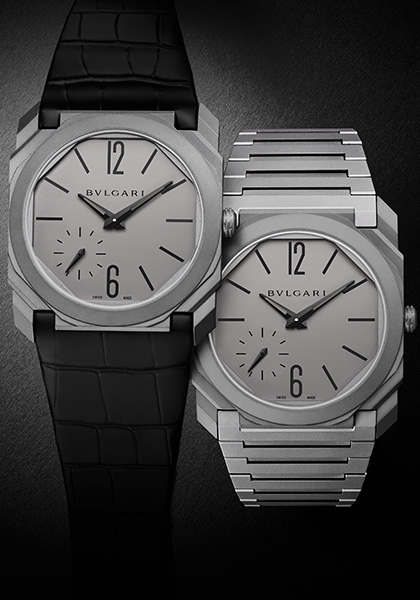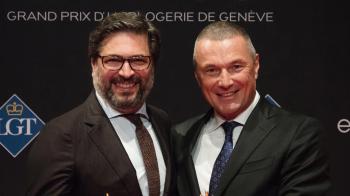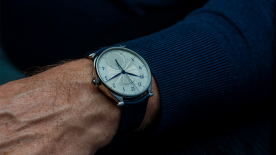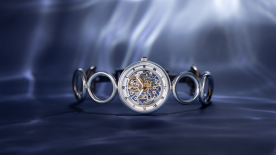You’ve been working at Bulgari for 17 years. How has the watchmaking division evolved over this period?
I started working at Bulgari in the year 2000 and things are completely different now than they were then. But the world is also a different place. Back then the Japanese were running the show, they were buying up watches everywhere and we had to have Japanese-speaking staff in our stores. They have now been replaced by the Chinese, who have different tastes, whereas the tastes of the Japanese – at least as far as men’s watches were concerned – were more aligned with western tastes.
So there has been an evolution in tastes, an evolution in customers and an evolution in materials, because models in gold, steel-gold and rose gold barely existed back then. And last, but not least, there has been an enormous evolution in the understanding of what watchmaking is about. Until the year 2000 it was relatively easy to build a brand with a nice design and have the watches assembled by a third party. Nowadays it’s much more difficult to enter the market because you need pedigree and legitimacy and this is what we have been building up over the past 17 years.
"When I started we had 50 boutiques, now we have 300."
Was there a particular moment when you saw the need for vertical integration at the Bulgari watch division or did it happen organically?
I think there are two sides to this. On the one hand there is how you see things yourself; on the other hand there is how things will actually play out. We knew what we wanted to do but getting there has been a long process. But the crucial moment was the acquisition of Gérald Genta in July 2000. That gave us the opportunity to understand the expertise of high-end watchmaking. When I had to integrate both Gérald Genta and Daniel Roth into Bulgari in 2009 that obviously accelerated the entire process of vertical integration.
It’s important to stress that Bulgari is about an expression of aesthetics above anything else, which is quite unique in the watch industry. But without the know-how behind it, of course, it would be impossible to perfect this expression and a watch like the Octo would never have been possible.
Does the high level of vertical integration, including case and dial manufacture, also help with the development of a watch as distinctive as the Octo?
Yes, of course. First of all, you cannot buy an ultra-thin movement on the open market, because the few brands that produce them guard them preciously. Secondly, we wanted our own expression of what an ultra-thin watch is, which is far removed from the dressy nature of our competitors’ products and more geared towards everyday elegance. Without the technical skills we have developed, we would not have been able to do this, and with them we have a point of differentiation.
From talking to fans and customers, the ultra-thin nature of the Octo and its world record is not necessarily the main reason that people like (and buy) the Octo Finissimo. Have you had the same feedback?
Yes, the world record is definitely not the main reason why people buy the Octo Finissimo. But it’s the reason why the watch made so much noise when we presented it at Baselworld. The watch introduced an entirely new aesthetic, but this aesthetic would not have been possible without the ultra-thin movement. We could have done the sand-blasted finish on the original case but it wouldn’t have been the same watch. We wanted the contemporary look more than anything.

The Octo’s success has been confirmed by the number of awards it received last year but also by the success it has enjoyed in terms of sales, which were double what we forecast before the launch. Here too, it is only thanks to our vertical integration that we have been able to adapt our production to cope with such a huge increase in demand in only 8 months.
Are you happy with the level of vertical integration at Bulgari or could you see it developing further?
If you are asking me whether I would like to integrate the production of another component, then I would say no. I am more interested in improving in other areas, for example in logistics, to give us even greater flexibility. We are in the hard luxury industry, which can tie up huge amounts of cash. So the way we manage this cash can be very important. For example, our inventory levels for components are now half of what they were a few years ago because we have reduced lead times considerably.
What do you enjoy most about your job and what is the toughest part of your job?
I get the most enjoyment in taking the brand from A to B. When I look back to what the brand was when I first started and what it is now it gives me a great sense of pride. I’m very proud of the Serpenti because it was my first launch in my current position and was a game-changer in ladies’ watches. The fact that it is the best seller for the brand shows that when you have something that defies conventions it works much better than simply trying to copy what everyone else is doing.
One of the main challenges is reconciling the different cultures of an Italian design team and a Swiss product development team. But at Bulgari the technical side is always at the service of design and the product development team have adapted to the Italian way of doing things, where taking time and mulling over aesthetics is more important than having a strict set of specifications. We have reached a great compromise with both sides respecting the philosophy of the other, but it has taken time.





